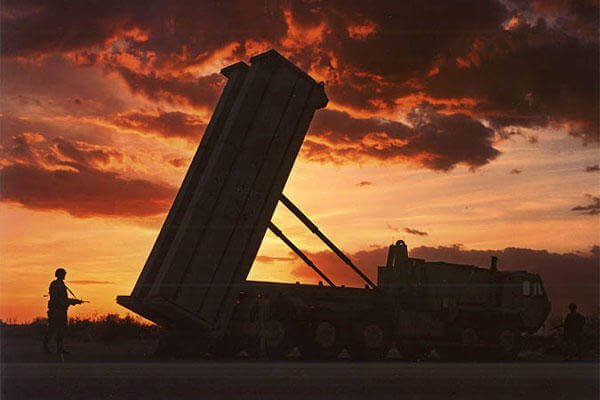The Army is pushing to have a permanent missile defense presence on Guam to guard against regional threats, primarily from North Korea, the Army's commander in the Pacific said Tuesday.
"They're technically rotational now" on one-year deployments to Guam, Gen. Vincent Brooks said of the hit-to-kill Terminal High Altitude Area Defense, or THAAD, systems made by Lockheed Martin Corp. "We want to get out of a rotational basis for that and get into a permanent station basis."
A permanent station on Guam "will make it possible for us to have more options for commitment of THAAD in other places if asked," said Brooks, commander of U.S. Army Pacific. One of those other possible places was South Korea, though "we haven't been asked to do that," he said.
Political sensitivities have thus far limited negotiations between Washington and Seoul on putting a THAAD system on the peninsula out of concern that China would see the placement in South Korea as a threat to its own security interests and the interests of its North Korean ally.
The issue was one of several addressed by Brooks at a breakfast with defense reporters in which he stressed his "Pacific Pathways" concept for an expanded Army role in the region, long considered the domain of the Navy and the Marine Corps, in the continuing U.S. rebalance of forces to the Pacific.
Despite the growing U.S. military presence in the Mideast, Defense Secretary Ashton Carter said on a visit to the Pacific last month that stability in that region depended on "the pivotal role of American military power. What the rebalance means is we intend to do that going forward."
Brooks said that his theater command has grown to 106,000 personnel, including 86,000 troops and 20,000 civilians, despite Army troop reductions and budget uncertainty.
"Our challenge was to reconcile our need to engage with the resources that were being reduced," he said. His answer was the so-called Pacific Pathways, which involved "taking tailored, ready forces and projecting them west of the international date line, using existing exercises as a way to gain presence."
In shorthand, that amounts to "more faces in more places without more bases," he added. Since 2013, U.S. Army Pacific has conducted four exercises annually with partners in the region, with each exercise moving through three different countries.
Brooks said he was now especially interested in establishing a military relationship with Burma, despite the inevitable tensions that would raise with China.
"The region really wants the U.S. to engage Burma," he said, noting that other military leaders in the region have been urging him to make contact with the Burmese military.
However, "we have to move at the pace we're allowed to" by the political realities, Brooks said. "We haven't advanced very rapidly thus far" but "I think there's good potential. It's a relationship I really want us to have and I'm eager to be allowed to do that," but he would await guidance from superiors.
--Richard Sisk can be reached at Richard.Sisk@military.com.






























